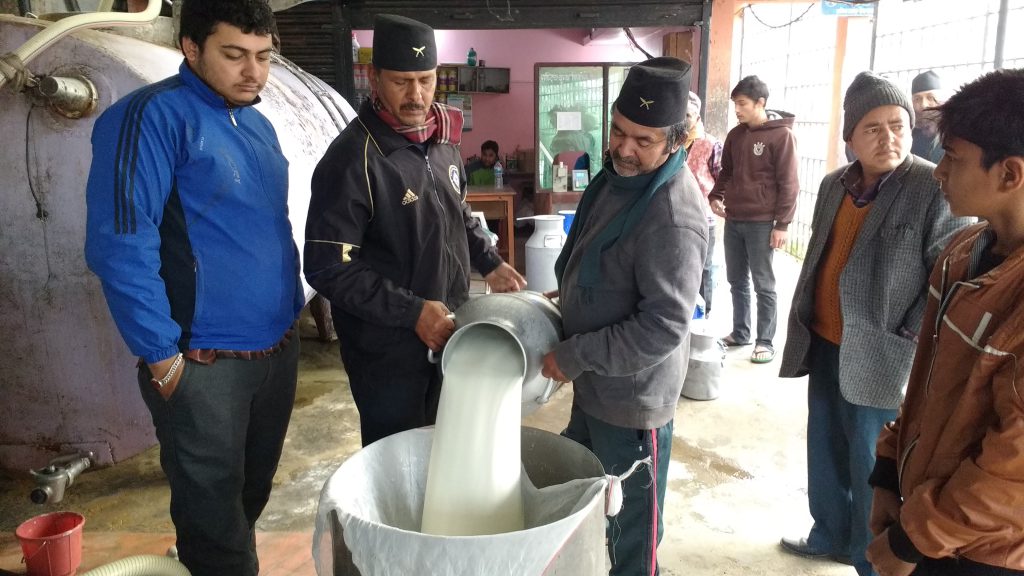Quick Summary: New research dispels the myth that drinking milk contaminated with a fungal toxin causes liver cancer. Evidence from four continents shows that milk distributors, especially in developing countries, have been too quick to dispose of milk containing levels of aflatoxin M1 exceeding regulatory standards. In such cases, the risk of poor nutrition due to milk disposal is much higher than the risk of cancer.
Key messages
- The risk of liver cancer from drinking milk contaminated with aflatoxin M1 is much lower than previously thought.
- There is no evidence for other serious health effects.
- International standards for aflatoxin M1 in milk are not risk-based.
- Dumping of such milk creates economic and nutritional risks that far outweigh the minimal cancer risk.
An international team of scientists has good news about milk: it is safer than previously thought. For years, the belief has persisted that milk containing a certain toxin might cause liver cancer. It turns out, the risks of contracting cancer in this manner are so low that drinkers of milk can stop worrying about it.
The risk is not zero, but it can be considered negligible at about 30 cases a year. This level is nearly 10,000 times less than the risk of being struck by lightning.
Think of M1 Minor, not B1 Bomber

The toxin in question is aflatoxin M1, and it is known to occur in dairy products. It is produced in mammals after they consume a much more dangerous mycotoxin in food or feed, aflatoxin B1, which is produced by certain Aspergillus fungi on many crops such as corn and peanuts. These crops are sometimes fed to livestock, and aflatoxin B1 toxin can also be concentrated in poorly stored animal feeds like oilseed protein supplement cakes. Because of this close relationship, and because aflatoxin B1 is confirmed as a carcinogen at a fairly high level, one might assume that aflatoxin M1 also poses a high risk.
The evidence tells another story. A new scientific article in The American Journal of Clinical Nutrition summarizes many years of global research about measurements of aflatoxin M1 in milk, consumption of milk around the world, and the possibility of cancer related to aflatoxin M1. First, exposure to the aflatoxin M1 in milk is 100 times less than to the B1 form in many populations worldwide. Second, the M1 variety is at least 10 times less potent as an agent of cancer than the B1 form, if carcinogenic at all. Even under the worst-case scenarios, the data suggest that barely 30 liver cancer cases would occur annually among 5.2 billion people.
Now Consider Undernutrition
Milk in Europe and the United States is considered unfit for consumption when its aflatoxin M1 level is too high, although neither the U.S. standard of 0.5 parts per billion nor the 10-fold stricter European standard is based on actual health risk. The EU standard is based on the “As Low As Reasonably Achievable” principle, while the basis for the action level defined by the U.S. Food and Drug Administration is unclear.
In recent years in Eastern Africa and Eastern Europe, countries that have adopted these standards have disposed of milk, or seen demand drop sharply, due to fear of aflatoxin M1. This creates a high-risk situation whereby poorly nourished children may lose access to this important source of nutrition. In essence, regulators have traded a low risk for a high one.
Food Problem for Animals
U.S. pet owners may be concerned about a 2021 outbreak of aflatoxin in pet food that killed more than 100 pets. Aflatoxins come in several types, and some are dangerous, such as aflatoxin B1 (AFB1), which has been shown to cause liver cancer and acute liver failure in humans and multiple animal species.
The point of the current research is that the specific compound aflatoxin M1, which is found in milk, is not highly dangerous in terms of cancer risk. It will remain for the dairy industry and its regulators to calculate what levels of this compound are truly too risky to accept, or if it even needs to be tested in milk products.

Research Details
A more detailed Research Brief is available at https://livestocklab.ifas.ufl.edu/articles-in-journals/AFM1
Below are listed the three main research articles used in this post. The 2021 and 2022 journal articles were funded by the Feed the Future Innovation Lab for Livestock Systems, located at the University of Florida (UF), and co-authors include Nikita Saha Turna from Michigan State University (MSU) and the British Columbia Centre for Disease Control, UF’s Arie Havelaar and Adegbola Adesogan, and MSU’s Felicia Wu.
- Liu Y, and Wu F. Global burden of aflatoxin-induced hepatocellular Carcinoma: A risk assessment. Environmental Health Perspectives. 2010;118:818-24. Doi: 10.1289/ehp.0901388.
- Saha Turna N, Havelaar A, Adesogan A, Wu F. Aflatoxin M1 in milk does not contribute substantially to global liver cancer incidence. The American Journal of Clinical Nutrition, 2022;, nqac033, https://doi.org/10.1093/ajcn/nqac033
- Saha Turna N, Wu F. Aflatoxin M1 in milk: A global occurrence, intake, & exposure assessment. Trends Food Sci Technol 2021;110:183-92. Doi: 10.1016/j.tifs.2021.01.093.

To connect with a researcher for comment, please contact IFAS Communications/News Media or Jim Harper at livestocklab@ifas.ufl.edu.
 1
1
